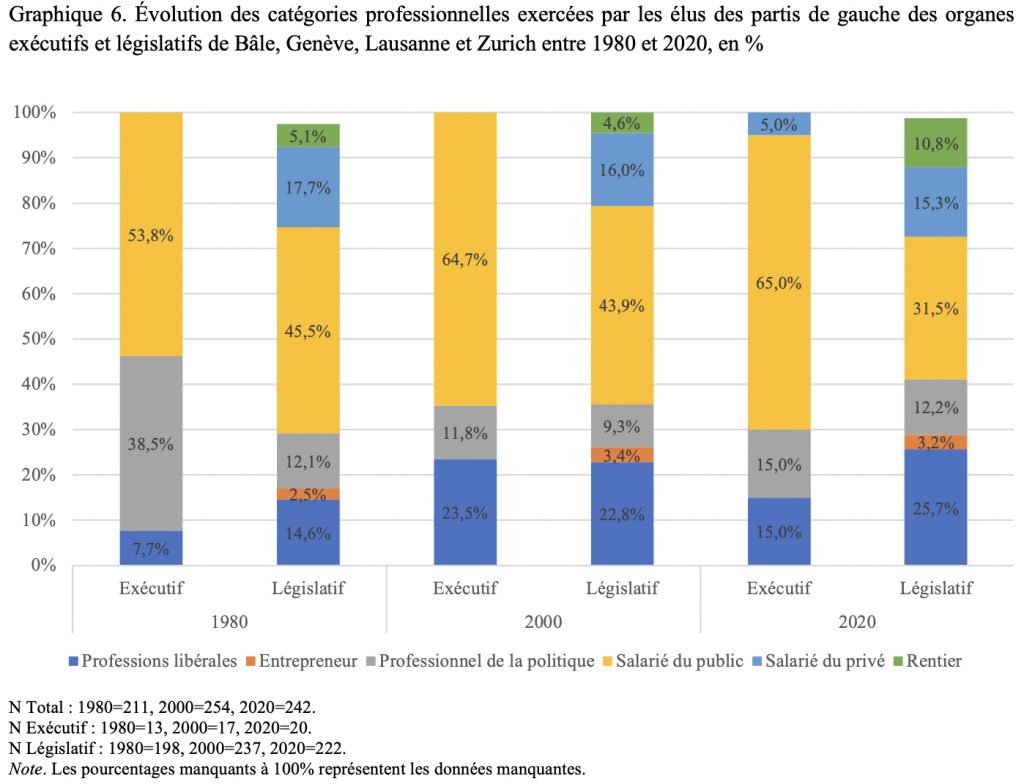Sinergia team member Baptiste Antoniazza has presented an article on the transformation of the political landscape in four major Swiss cities between 1980 and 2020. Since the beginning of the 1990s, the largest Swiss cities have been continuously ruled by left-wing coalitions. The Swiss peoples’ party, through the voice of its president, Marco Chiesa, has launched a series of attacks against the « caviar left and the green moralizers of the cities », but can we actually observe the access to power of a new left elite? This article aims to document the context of the rise to power in the four largest Swiss cities (Basel, Geneva, Lausanne and Zurich) of a « new urban left » which finds its roots in the new social movements of the 1960s, 1970s and 1980s, led by young students. It also scrutinizes the specificity of those who constitute it. To do this, we analyze the changing profile (education background and main professions) of left-wing local elected representatives at three key dates (1980, 2000 and 2020). Second, we analyze more specifically the main goals and policies promoted by the new urban left when it comes to power which differentiate them from previous conservative political majorities. We do this through the analysis of the themes put forward by the Social democratic party during two electoral campaigns in the city of Lausanne in 1981 and 1989. We thus hope to contribute to a better understanding of the left political elites who continuously run the big Swiss cities in a quasi-hegemonic way since the beginning of the 1990s.
→ Paper (in French)
